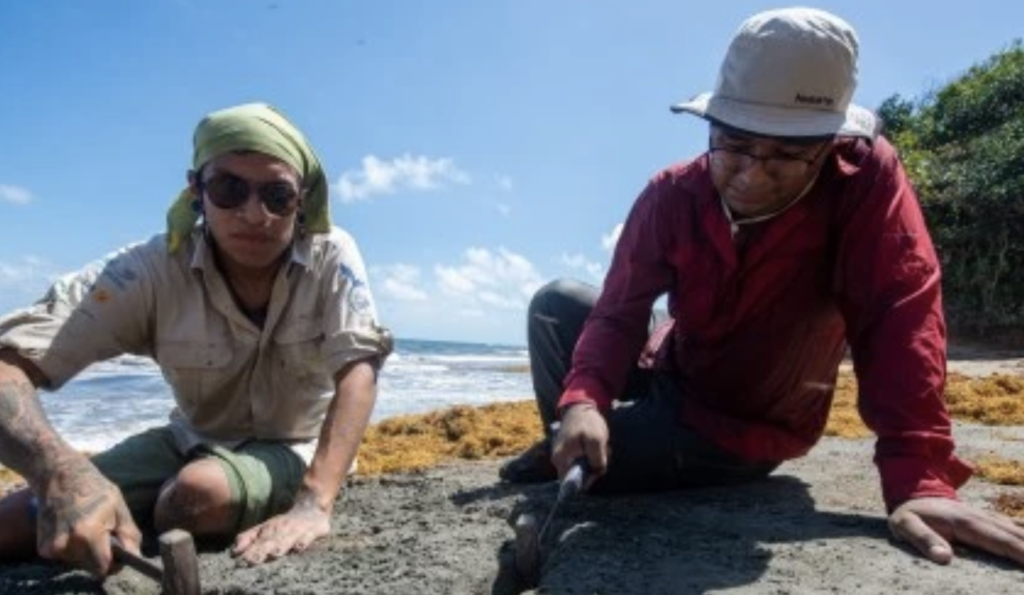
An international paleontology research published in the prestigious scientific journal Biology Letters provides new information on the extinct cetacean fauna of odontocetes of Panama and the connectivity between the Caribbean and the Pacific during the late Miocene.
The group that carried out the research on the Caribbean coast of Panama is made up of Aldo Benites, Jorge Vélez-Juarbe, Carlos Jaramillo and the Panamanian paleontologist Carlos De Gracia.
The published research details the discovery of cetacean fossils in rocks of a geological unit known as the Chagres Formation, located in the province of Colón, and which is aged 5.8 to 6.4 million years old or late Miocene.
Among the fossils discovered is a large jaw whose dorsal view is “Y” shaped and preserves glazed teeth with bulbous roots and rough ornamentation, which are typical of the genus Acrophyseter or also known as extinct macroraptorial sperm whales. Other specimens include a skull fragment of a pygmy sperm whale of the subfamily Scaphokogiinae and another skull belonging to a focenide (marssops) of the genus Piscolithax, both also extinct.
During the Miocene, in Panama there was a shallow water connection between the Caribbean and the Pacific that influenced the dispersion of marine species on both sides of the Isthmus. Cetacean communities for this time, in general, were dominated by small bearded whales of the Cetotheriidae family and toothed whales Pan-Physeteroidea, Iniidae, Ziphiidae and Phocoenidae (similar to porpoises), in addition to representatives of modern taxa, such as balenopterids and ocean dolphins.
The fossils described, added to previous discoveries such as Isthminia panamensis (a marine ancestor of river dolphins) and Nanokogia isthmia (a pygmy sperm whale), reveal that the fossil cetacean fauna of Panama had similarities with the Miocene cetacean communities of the Californias in the North Pacific and those of Pisco, Peru, This similarity suggests that there was an exchange of shallow waters of the Caribbean-Pacific during the late Miocene, despite the fact that the deep-water connections had already been closed.
Despite these similarities, the fossil cetaceans of Panama show morphological differences that show speciation and diversification of marine fauna after the blocking of the circulation of deep waters between the Caribbean and the Pacific. Future work in Panama and throughout the Caribbean region is expected to reveal more extinct marine mammal fauna.
The article Bridging two oceans: small toothed cetaceans (Odontoceti) from the late Miocene Chagres Fm., eastern Caribbean (Colon, Panama) is the result of international collaboration between various institutions such as the Institute and Museum of Paleontology of the University of Zurich, Switzerland; the Center for Paleontology and Archaeology of the Smithsonian Institute